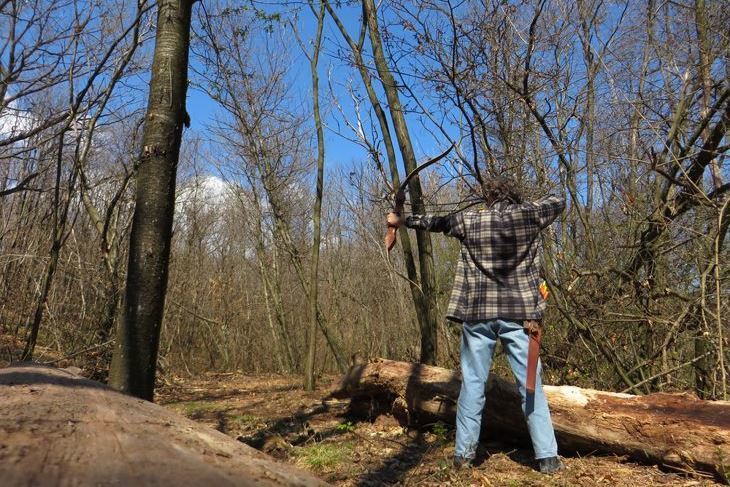When it comes to bowhunting, one of the important tasks to learn is how to string a recurve bow. It’s a fundamental skill to help keep your bow in good condition and to shoot with it easily. However, not many people know how to do it, especially those who just began bowhunting with such bows!
Don’t worry, it doesn’t have to be such a tedious and daunting task with the right steps and tools. So if you’re wondering how to string a recurve bow, read on! I’ll be showing you the basic steps and tips to have you string them in no time.
Table of Contents
How to String a Recurve Bow
Recover bows have curved bow arms and strings that resemble the letter D when putting together. When you connect the arrow with your nock, your arrow will be aligned with the string. However, stringing it will require attention and caution to avoid hurting yourself in the process!
Follow these simple steps for more help:
1. Get a Bow Stringer
If you don’t have a bow stringer yet, make sure you buy one, which is an absolute necessity for stringing your recover bow without damaging it. It should fit over the receiver bows limb tips snugly.
You need to choose a bow stringer that’s made for a recurve bow, designed according to its specific length and draw weight as well.
2. Place the String Over the Tips and Fit It
When you have already prepared the bow and stringer, place the string over your recurve bow’s tips. Slide your string’s larger look over your bow’s upper limb. Then, fit your smaller loop to the lower limb, ensuring it fits snugly.
For stringers with two pockets, the larger pocket would fit over the bow’s lower limb. The small string loop should be covered and secure and if not, wrap rubber bands tightly around it.
3. Place the Saddle Properly
Place the saddle or the small pocket to the bow’s upper limb. Again, if the stringer comes with two pockets, the small pocket should go over the upper limb’s tip.
For stringers with a saddle on one end, then slide it over your bow’s top limb, right behind its string loop. Position this saddle around three inches from the bow tip. You can secure some saddles against the bow while others need you to hold it in place, just make sure you press the limb to lessen the friction.
See also:
- The 10 Best Bow Case Reviews You Need to Check Out Now!
- The Best Bow String Wax Reviews You Need to Invest In Now!
4. Hold the Bow and Step On the Stringer
Now, hold your recurve bow by the grip horizontally and use your non-dominant hand when doing so. The dominant hand should be near the upper limb and holding its loose string loop into place. Make sure you position your recover bow in a way that its limb tips are pointing upward and with the stringer and bowstring under it.
Now, bend the stringer at the waist, lowering the bow until the stringer is touching the ground. Step on the stringer with both your feet, shoulder-width apart. Make sure you’re using the balls of your feet and not the arches to prevent slipping.
It’s best to use two feet rather than one for more stability, especially for short adults or children. Also, if you have a saddle-bow stringer, use your hands to keep your saddle secure.
5. Draw Up and Slide the Large Loop
Now, take the slack in the bow stringer up, then check if you have the secure grip. Prepare yourself to pull upward and bend the recurve bow’s limbs back and towards the ground.
Slide the large loop to the notch the moment you pull the bow up, sliding the loose string loop until it fits the notch near your recurve bow’s tip. If it’s difficult to do, you might have long stringers. Shorten the stringer and tie knots near its bottom pouch.
6. Check If Secure and Slowly Lower
Now, check if the bowstring is secure by running your fingers over the string loop. This confirms if the strings are secure inside the bow’s groove. Lower your recurve bow slowly until the stringer’s slack, avoiding to rush or it can slip off and injure you!
Check the string by turning your bow (the limbs are away from you) and double-check the string loops again. Repeat the process if it isn’t secure enough. If it is secure, remove the bow stringer and you’re done!
Wrapping It Up
I hope this article on how to string a recurve bow helped you out! So don’t wait any longer and begin following these steps for a properly maintained bow now.
If you have any questions or want to share your tips on stringing recurve bows, then comment below. All your thoughts are much appreciated!

